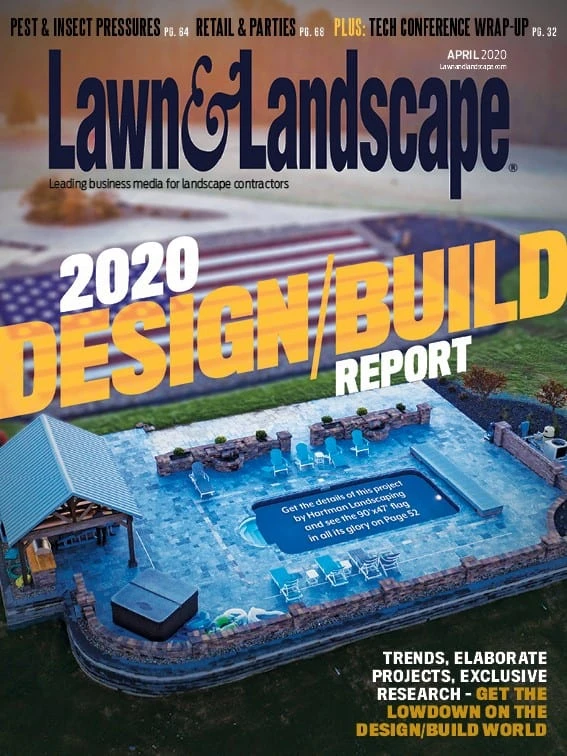

A necessary house addition forced a rethink of a stunning 30-year-old landscape. Many new elements were added along with the resolution of substantial water issues.
The project was designed and installed by ILT Vignocchi in Wauconda, Illinois and it took a year to complete. It won the Judges’ Award during the Illinois Landscape Contractor Association’s 2020 iLandscape show. The Judges’ Award is the best project among all entries as chosen by the judges.
Part of the property is in the 100-year floodplain. Due to this, the property would consistently hold or take on water. It would always take a while for the water table level to recede back to normal levels after a heavy rain. This water fluctuation and slow draining affected the plant material over time.

“Shrubs and perennials showed signs of stress and trying to find the correct balance of water-loving plants and plants that preferred drier conditions (which could happen mid-summer) always become a challenge,” says Aaron Zych, landscape architect and vice president at ILT Vignocchi.
“That is the reason we installed a large gravel ‘cistern’ under the lawn panel, to drain the water away from all the new plants while having a place to store all the collected water. This, along with using raised planting beds, provided a home for many of the perennials that was more conducive to long term health. Everything has been flourishing since the revisions.”

New elements added to the property include a pool (which reused the existing irregular bluestone on the old patio for the decking), a brick privacy wall, the plantings, a formal lawn panel (with the underground storage capacity for storm water), garden paths, water features, a pond, an elevated sitting garden and a dinning and cocktail patio which all seamlessly blend together to create a stunning rear yard.
During construction, the extremely prized roses of the client had to be transplanted, cared for off-site for months, and then replanted.

“Roses do not transplant great, so we had to take extra care when removing them,” Zych says. “We took them all to our off-site greenhouses, and cared for them during the construction process. When construction was finished the roses were replanted in their new raised garden bed.” Access to the property was another issue.
“There were many large mature trees we had to work around so we didn’t lose them,” he says. “This meant that bringing in large machinery to help with this project was not an option. Small machines or hand work had to be done to make this project possible.”
Get curated news on YOUR industry.
Enter your email to receive our newsletters.

Explore the April 2020 Issue
Check out more from this issue and find your next story to read.
Latest from Lawn & Landscape
- SiteOne names Carrothers VP of agronomic business development
- Batman and business
- Ever-changing landscape of SEO
- Fleetio acquires Auto Integrate, raises $450M in Series D funding
- Davey Tree expands in St. Paul, promotes Ostlie to district manager
- Schill Grounds Management taps 3 for senior leadership roles
- HD Hyundai Construction Equipment North America adds to wheeled excavator lineup
- High maintenance





